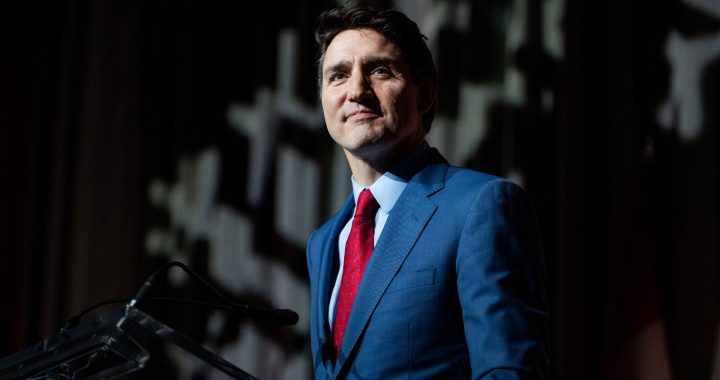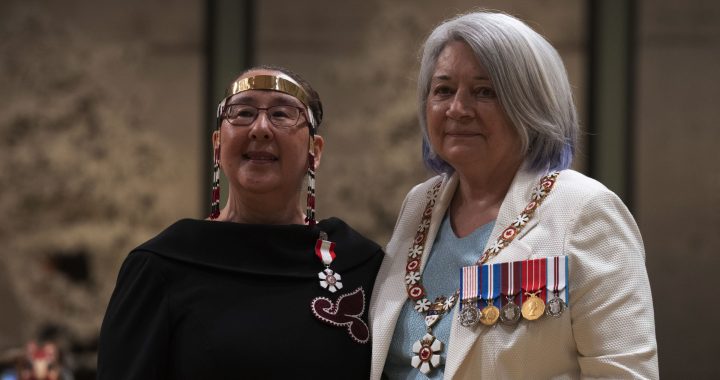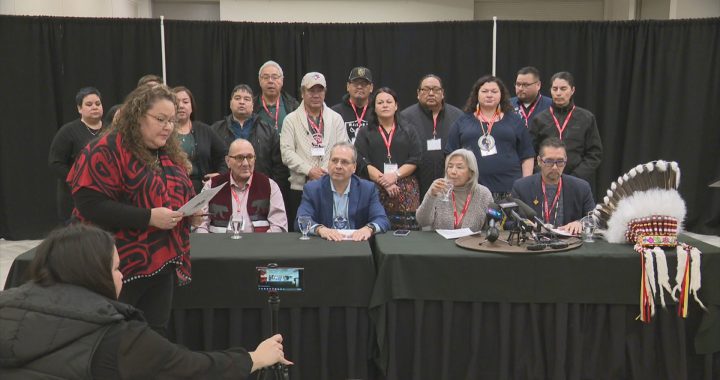(Jeneya Stephen, five-months-old, is undergoing treatment in a Timmins, Ont., for a bacterial infection that created lesions across her body. Facebook photo)
Jorge Barrera
APTN National News
As Prime Minister Justin Trudeau promised Monday that his government’s first budget would “feature historic investments in First Nations and Indigenous Canadians” federal health officials faced an evolving health crisis in a northern Ontario Cree First Nation.
Up to 16 children from Kashechewan were in the process of being airlifted to hospitals in Timmins, Ont., Moose Factory, Ont., and possibly Kingston, Ont., for treatment of skin lesions that have been appearing on their bodies, said the area’s NDP MP Charlie Angus.
On Sunday, a young girl was taken by medivac to Moose Factory, Ont., to treat the same type of lesions that appear to have been caused by a bacterial infection, said former Kashechewan chief Derek Stephen.
The day before, on Saturday, after the community’s medical personnel determined it wasn’t an emergency, Stephen paid out of his own pocket for a charter airline to transport two infants, his niece Jeneya Stephen, who is five-months-old, and a boy named Eagle Sutherland who is four-months-old, for treatment in Timmins for severe lesions that spread across their bodies.
“They gave (Jeneya) antibiotics, but she also has infections now inside her body,” said Stephen. “Her white cells are way up. They are trying to find what the infection is. She is trying to fight it.”
Jeneya underwent open-heart surgery in December and Stephen said there was concern the infection could weaken her recently repaired heart-valves.
“I think everyone is frustrated,” said Stephen.
The unfolding health crisis in Kashechewan once again puts into sharp focus the struggle faced by many First Nation communities.
It’s currently unclear what is causing the sudden outbreak of lesions in Kashechewan that has not only afflicted children, but also adults.
Health Minister Jane Philpott said during question period Monday that her department was sending a medical team from Moose Factory to go door-to-door in the community, which sits near where the Albany River flows into James Bay, to determine whether there were more cases and investigate the source.
“A number of children have already been transported out of the community,” said Philpott. “There will be further steps to prevent further infections.”
Philpott said during a scrum with reporters that health officials did not believe water quality is the cause of these rashes and she cryptically referred to an “infectious condition” as the cause of the outbreak.
“The water has been tested as recently as last Tuesday and we know that it meets all of the appropriate standards for safety in drinking water and for water to be used for other purposes,” said Philpott. “The causes are known and I can’t give you specifics on it…One of the possible conditions that could cause lesions like this is an infectious condition. I can’t give you specifics on the actual case, but I can assure you that the appropriate care is being given and the appropriate preventive measures are being undertaken.”

Stephen said Philpott’s statements are based on pure assumption.
“She doesn’t know,” he said.
Doctors are still trying to figure out what caused Jeneya’s bacterial infection and the infant is scheduled for more testing Wednesday.
Nurses in the community were initially treating the lesions as eczema and prescribed creams for treatment that didn’t work, said Stephen.
Stephen said he still suspects this is a repeat of the crisis that hit Kashechewan in October 2005 when high E. coli levels found in the community’s drinking water led to shock chlorine treatments that triggered an outbreak of serious skin lesions. About a quarter of the community was evacuated to Timmins, Cochrane, Ont., Ottawa and Sudbury, Ont., as a result.
Stephen said the community’s sewage lagoon may again be seeping into the drinking water system.
“Since the 2005 crisis in our community all the government has done are repairs and quick fixes. There are numbers out there, proposals that are sitting in their offices to do permanent replacements for the water plant and infrastructure,” said Stephen, who was chief from 2012 to 2015.
The intake pipe for Kashechewan’s water treatment plant, built in 1995, sits downstream from the lagoon, leaving it susceptible to the James Bay tides which can push the soiled water up into the pipe.
Kashechewan itself sits on a floodplain and has twice been evacuated in recent years as a result of the overflowing Albany River. The community is only accessible by boat and airplane throughout most of the year. The community is accessible by ice road for several weeks during the winter.
NDP leader Thomas Mulcair during Monday’s question period linked the unfolding health crisis in Kashechewan with the community’s infrastructure when he pressed Trudeau on whether Tuesday’s budget would meet the needs of these struggling communities.
“First Nations children across the country are living in crisis because the federal government does not provide them with the same resources other Canadian kids get. We have children in Kashechewan suffering from horrible sores because they do not have access to clean, safe drinking water,” said Mulcair. “Will the Liberal budget provide full, equivalent funding to end the gap on health, water, and education for first nations children?”
Trudeau said the federal budget would “begin” to close that gap.
“(Tuesday’s) budget will featured historic investments in First Nations and Indigenous Canadians right across the country to being to make it right, which we have not done for so many decades in this place, in this building,” said Trudeau.
Mushkegowuk Council Grand Chief Jonathan Solomon said he hopes the Trudeau government realizes real lives would be impacted by decisions on how much the budget would invest in First Nation communities.
“I think they have to be able to visualize the communities in regards to the conditions, the kind of living conditions our people are living in,” said Solomon, who was also once chief in Kashechewan. “I am keeping my hopes high that there will be something good for First Nations, not only in my area, but across the country. Many communities have been in dire situations.”
@JorgeBarrera










